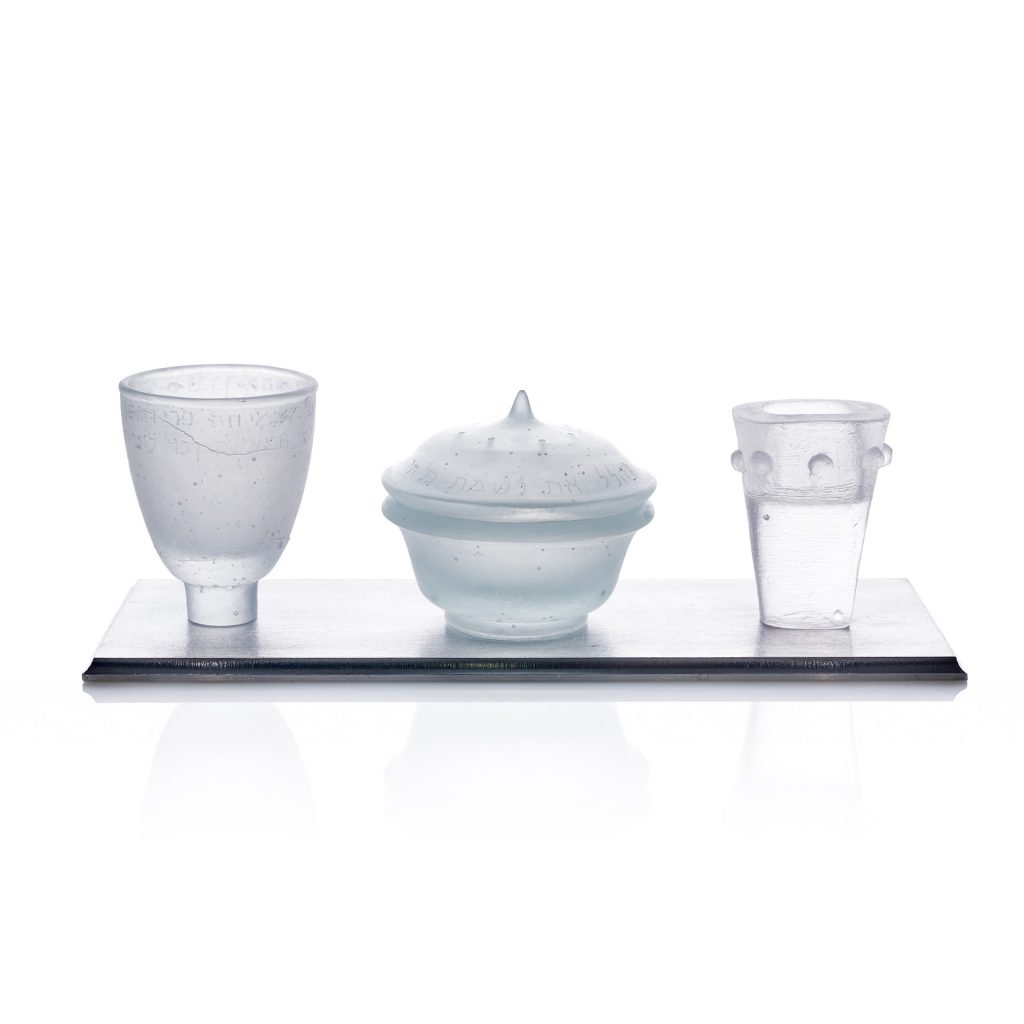Edie Horton )b. 1952(
Havdalah Set, 1997
Candleholder, spice box, kiddush cup: kiln cast lead crystal;
base: brushed aluminum
Museum Collection
Must Know
Edie Horton was born in Australia, a country unique in it’s vast open spaces and intense sunlight. She is the daughter of Holocaust survivors, and her work as an artist is the result of her search for self-definition within the context of familial and collective memory. She grew up with the smells and sounds of Australia which forms part of her identity and mingles with her European past to influence her artistic eye. The Australian gumnut and its cycle of life were the inspiration for the Havdalah set. The design of the candleholder is based on a side section of the gumnut after it has flowered. This gumnut is a storehouse of seeds (life) ready to regenerate the earth, the candle as a source of light celebrating the start of the new working week. The colours relate to the blossoms and leaves, the spices aromatic native plants. In the traditional blessing,
“G-d is praised not just for creating the aromatic spices but for creating (many) kinds (or varieties) of fragrant spices. If fragrances are taken metaphorically to mean identities, this blessing might be said to celebrate the diversity of individual identities within creation.”
More Info
Glass as a material is fragile, breakable. Not very much survives as material witness
to history. That which remains is precious and treasured. Ede works in cast
glass. It is challenging material to work with, to mould to shape and to master. And
although it is vulnerable it is weighty. It has real presence. The individual pieces
that make up this work are small, even miniature, delicate and indeed precious.
Edie Horton’s glass sculptures focus on the themes of emotional vulnerability as well as personal and cultural identity.
her works are tangible objects about the intangible – migration, silence, loss and change. She thinks of herself as a storyteller. She often take an historical perspective to express how, through many generations, we deal not only with change but also how we recognise and retain the memories and rituals that thread consistently throughout our lives. These very personal perspectives define who we are.

